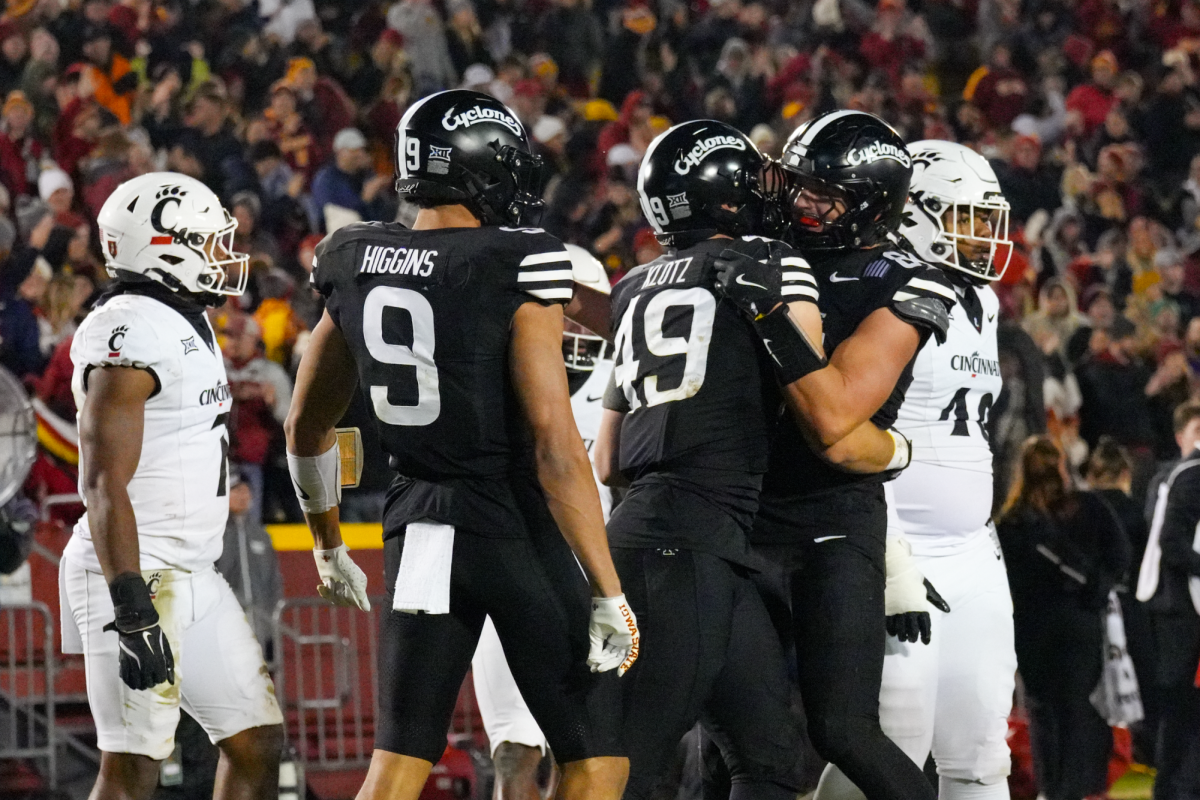Enrollment increasing while number of faculty decreases
March 9, 2001
Editor’s note: This is the first in the opinion page’s “Faculty Fridays,” where a different faculty or staff member will write a column each week about issues facing ISU faculty and staff, ISU students or the world at large.
Faculty and staff members interested in writing a guest column for the Daily can contact the opinion desk at 294-6768 or by email at [email protected].
The ever-increasing enrollment and continuously declining number of faculty, coupled with continuing budget under-funding and dismal budget projections, portends very serious problems for the quality of education at Iowa State.
We are all well aware of the record enrollment for both the fall and spring Semesters. Fall classes at Iowa State began by breaking a 15-year record with an enrollment of 26,845 students for an increase of 735 students over the previous year. This increase in students came directly on the heels of a loss of 30 faculty positions during the summer of 2000.
In fact, Interim President Richard Seagrave is quoted in a Sept. 7, 2000, Des Moines Register article as saying: “Even if those positions hadn’t been eliminated, the university would still need 30 more professors to accommodate the increased student load.”
According to the Dec. 4, 2000, Board of Regents Annual Governance Report on Faculty Tenure, the number of tenured, tenure track and non-tenured faculty at Iowa State has been declining for nearly a decade and a half, while during the same period there has been significant growth in the number of faculty at both the University of Northern Iowa and the University of Iowa.
In fiscal year 1986-1987 the University of Iowa had 2,964total faculty members.
In short, during the nearly decade and a half from 1986-1987 to the present, the University of Iowa had a 32 percent increase in total faculty and the University of Northern Iowa had a 26 percent increase, while Iowa State had a 12.5 percent decrease in total faculty.
Indeed, the 12.5 percent decrease (254 faculty positions) occurred during a period when enrollment increased from 25,707 to 26,845 students.
These data suggest the obvious question: Why has the number of faculty at Iowa State been significantly declining while the number of faculty at the other regent universities has significantly increased under similar enrollment growth and budget constraints?
Last year the regent universities faced a mid-year deappropriation of $3.4 million – of which $1.3 million came from the ISU budget. This deappropriation resulted in the loss of some 30 faculty positions as well as a number of staff positions.
Following this funding reversion, the regents requested $27.4 million for an average 4 percent salary increase for 2000-2001. However, only $18.2 million was allocated, resulting in an under-funding of $9.2 million. Despite health insurance increases totaling 17 to 35 percent depending upon employee group, the regents received no increase in funds for health insurance.
As a result of this under-funding, employee health benefits were reduced and about half of the shortfall was absorbed from centrally allocated funds with the balance to be allocated among operating units on a pro rata basis.
Again this year, the university is facing the possibility of yet another deappropriation, and the funding picture for next year is quite bleak.
Both our budget history and the budget projections suggest that the university cannot continue to support increasing numbers of students with a decreasing budget and declining numbers of faculty and reasonably expect to maintain the quality of service (education).
As my students would say, the bottom line is that something has to give and that something should not be – and cannot be – the quality of our students’ education.
Clearly, if our current budget situation continues, the university must either reduce the services it provides or reduce the number of customers it serves. Neither option is desirable, but clearly the university has reached a point where the issues of increasing enrollment, the declining number of faculty and continuing under-funding will force a change.
In the long run, we must all work far more diligently at informing our faithful supporters, the people of Iowa, of the importance and value of strong universities to the intellectual and economic well-being of Iowa.
Until this is accomplished, we will continue to find it very difficult to provide the quality of education the people of Iowa expect from its great universities.
David Hopper is a professor of veterinary diagnostic and production animal medicine. He is the president of the Faculty Senate.






